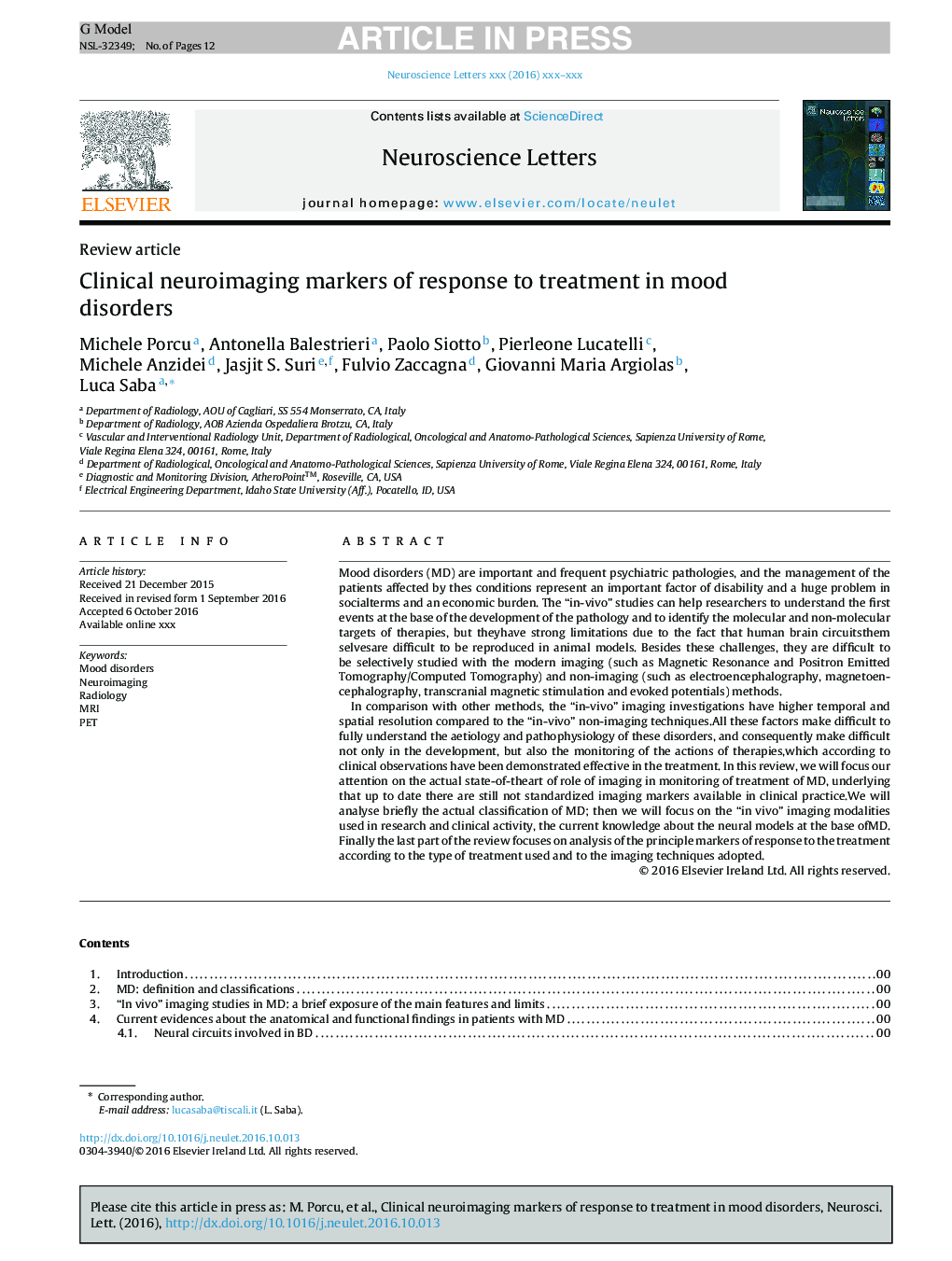| Article ID | Journal | Published Year | Pages | File Type |
|---|---|---|---|---|
| 8841718 | Neuroscience Letters | 2018 | 12 Pages |
Abstract
In comparison with other methods, the “in-vivo” imaging investigations have higher temporal and spatial resolution compared to the “in-vivo” non-imaging techniques. All these factors make difficult to fully understand the aetiology and pathophysiology of these disorders, and consequently hinder the analysis of the effects of pharmacological and non-pharmacological therapies, which have been demonstrated effective in clinical settings. In this review, we will focus our attention on the current state of the art of imaging in the assessment of treatment efficacy in MD. We will analyse briefly the actual classification of MD; then we will focus on the “in vivo” imaging methods used in research and clinical activity, the current knowledge about the neural models at the base of MD. Finally the last part of the review will focus on the analysis of the main markers of response to treatment.
Related Topics
Life Sciences
Neuroscience
Neuroscience (General)
Authors
Michele Porcu, Antonella Balestrieri, Paolo Siotto, Pierleone Lucatelli, Michele Anzidei, Jasjit S. Suri, Fulvio Zaccagna, Giovanni Maria Argiolas, Luca Saba,
